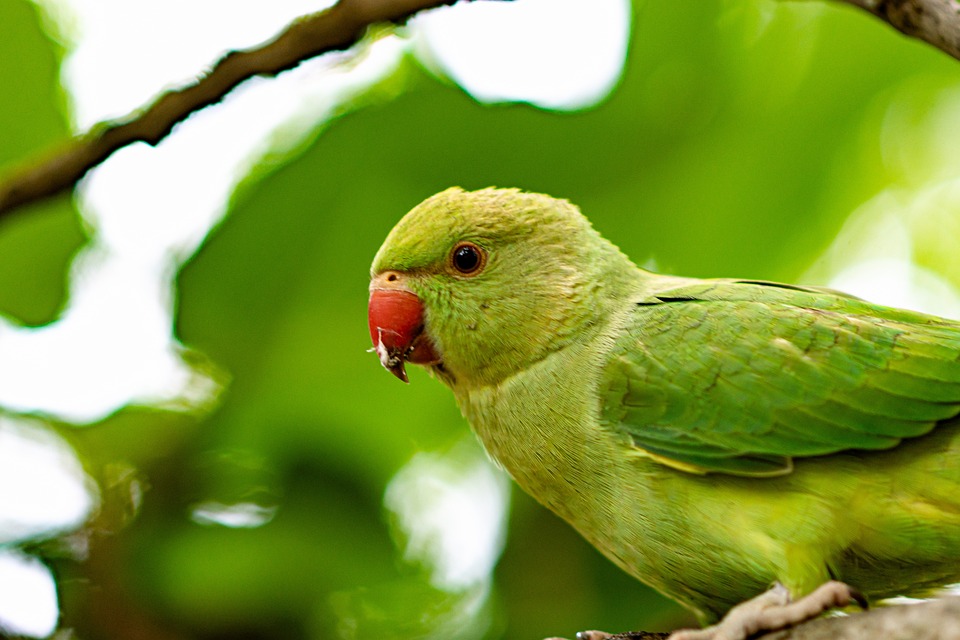Parrots are known for their vibrant feathers and intelligent behavior, but one aspect of their behavior that often captures the attention of parrot owners and enthusiasts is wing flapping. In this article, we will delve into the meaning behind wing flapping and shed light on this common parrot behavior.
Wing flapping refers to the rhythmic movement of a parrot’s wings, often accompanied by the extension and contraction of their flight feathers. This behavior can range from subtle and gentle motions to more vigorous and energetic flapping.
Wing flapping is a natural instinct for parrots. In their natural habitat, parrots use wing flapping as a means of maintaining balance, stretching their flight muscles, and staying physically fit. This behavior is essential for their well-being and overall health.
Parrots are highly social creatures and often use wing flapping as a display of joy and happiness. When a parrot is excited, content, or pleased, it may engage in lively wing flapping. This behavior is often accompanied by vocalizations, such as chirping or squawking, further emphasizing their state of happiness.
Parrots are intelligent beings capable of using body language to communicate their needs and desires. Wing flapping can serve as a form of communication, particularly when a parrot seeks attention. By flapping their wings, parrots may be signaling their desire for interaction, playtime, or socialization with their owners or fellow parrots.
In some cases, wing flapping may be a part of a parrot’s mating ritual. During courtship, male parrots often engage in elaborate displays, including wing flapping, to attract a potential mate. Female parrots may also exhibit wing flapping as a response to the male’s advances.
While wing flapping is generally a positive behavior, excessive or prolonged wing flapping can sometimes indicate stress or anxiety in parrots. If a parrot repeatedly flaps its wings aggressively, accompanied by other signs such as feather picking, aggression, or vocal distress, it is crucial to assess the bird’s environment and consult a veterinarian or avian behaviorist for assistance.
Now, let’s address some frequently asked questions (FAQs) to provide a comprehensive understanding of wing flapping in parrots.
Q1. Is wing flapping harmful to my parrot?
Wing flapping, when performed within normal limits, is not harmful to parrots. It is a natural behavior that helps maintain their physical health. However, prolonged or aggressive wing flapping may lead to feather damage or injury. Ensure your parrot has a safe and spacious environment to engage in this behavior without risk.
Q2. How can I encourage healthy wing flapping in my parrot?
Providing ample space for your parrot to stretch its wings and engage in flight is crucial. Offer a large, bird-safe play area where your parrot can exercise and flap its wings freely. Regular out-of-cage time and supervised flight sessions can also promote healthy wing flapping.
Q3. My parrot flaps its wings excessively when startled. Is this normal?
Startle response is a natural reaction in parrots, and some individuals may exhibit excessive wing flapping when surprised or frightened. However, if this behavior becomes constant or is accompanied by signs of distress, it is advisable to investigate the underlying cause and ensure your parrot feels secure and safe in its environment.
Q4. Can I train my parrot to reduce wing flapping on command?
While it may be challenging to completely control a parrot’s natural instinct to flap its wings, you can redirect their behavior through positive reinforcement training. Teach your parrot commands like “gentle” or “calm” and reward them when they exhibit controlled wing flapping or settle down.
In conclusion, understanding parrot behavior, particularly wing flapping, is crucial for parrot owners to ensure the well-being and happiness of their feathered companions. By recognizing the various meanings behind wing flapping and addressing any concerns, you can provide a nurturing environment that encourages healthy parrot behavior and strengthens the bond between you and your feathered friend.









